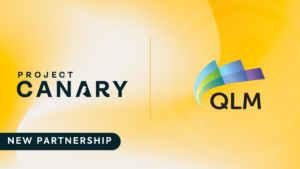Methane emissions from the energy sector are in sharp focus as the 27th Conference of the Parties of the U.N. (COP27) Framework Convention on Climate Change gets underway in Egypt. Methane has rightfully taken center stage as energy production continues to be one of the largest global sources of GHG (greenhouse gas) emissions and reducing them is the most cost-effective lever available to address climate concerns. Therefore, it is essential that COP27 results in concrete commitments to reduce methane emissions from the energy sector.
At Project Canary, we know this and want to continue working with others to lead the development of solutions to meet forthcoming standards. We are a group of over 150 engineers, scientists, product developers, software engineers, and others committed to helping the energy sector demonstrably reduce emissions. Doing so increases the viability of essential energy sources and systems through the energy transition — which requires the addition of new, cleaner energy sources while reducing emissions from existing ones.
Our goal is to provide independent, trusted data to help the energy sector demonstrate and differentiate operational excellence and utilize advanced technologies and data analytics to monitor and measure methane emissions so they can be identified, reduced, or eliminated.
I have been privileged to work in and around the energy sector since the 1990s, and I have seen tremendous progress over time. Many large and medium natural gas producers have supported new methane regulations for some time. Today, these leading operators are investing in new equipment, monitoring solutions, and measurement technologies, and more will surely follow. It is exciting to see all of this in action. Today, we can already find, measure, and mitigate emissions at the site level in near real-time — all enabled by technology, innovation, and human ingenuity.
We are optimistic about the future — we believe that a robust energy sector, a cleaner environment, and a strong economy are not mutually exclusive. Competition is fundamental to the emerging measurement economy, but so is collaboration. That is why we are building an open data platform that integrates and reconciles a diversity of emissions monitoring and measurement technologies — the Canary platform presents a digital canopy of data and insights for total site emissions. We believe transparency and better data are the essential foundations for future energy development, and we want to help develop what that looks like in practice.
Anything worth doing is going to be tough and take time. Confidently solving the methane issue will require collaboration, transparency, multiple measurement solutions (each of which has strengths and weaknesses), and site-level emissions characterization based on verifiable data. With methane in high focus, operators can show their strengths – demonstrating methane intensity, illustrating best management and operating practices, specific monitoring technologies, and company-level emission reporting and reduction targets.
While some market participants will aim to meet new regulatory requirements, others will seek to differentiate and future-proof their performance. We believe that leadership can and will be recognized and rewarded by buyers of gas for those sellers willing to set their sights on higher environmental performance and a lower-impact product, particularly as it relates to methane intensities. We believe the gas buyers and/or an assemblage of government, NGO (non-governmental organizations), academic, and community stakeholders are best positioned to set standards and thresholds for certification.
In the U.S., many of the actions taken to date have been voluntary, and they have given regulators confidence in what is possible. New methane regulations are on the horizon at the Environmental Protection Agency, the Bureau of Land Management, and other regulatory agencies. The European Union is also regulating methane and looking for ways to encourage more low-methane natural gas imports. At the core of all this will be better ways to measure, reduce and report methane emissions accurately. We expect regulators to recognize technology’s role in solving methane emissions moving forward. With the passage of the Inflation Reduction Act, the future regulatory state has been revealed.
This will give way to new compliance drivers, open-source reporting frameworks, standards, and industry protocols developed by a multitude of stakeholders, including buyers, academics, industry, NGOs, and regulators. With the rules of the game and guideposts in place for the future state, we will be well on the road to a world where technological advancements in methane detection, measurement, and reduction, combined with emissions capture and sequestration, means that we can produce carbon-neutral energy across the globe.
This highly desirable future is much closer than some might think.
Brian Miller, SVP Public Policy and Growth, Project Canary

